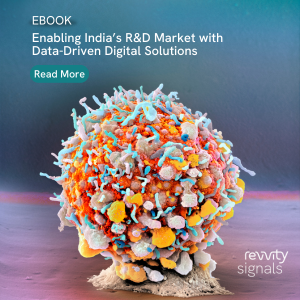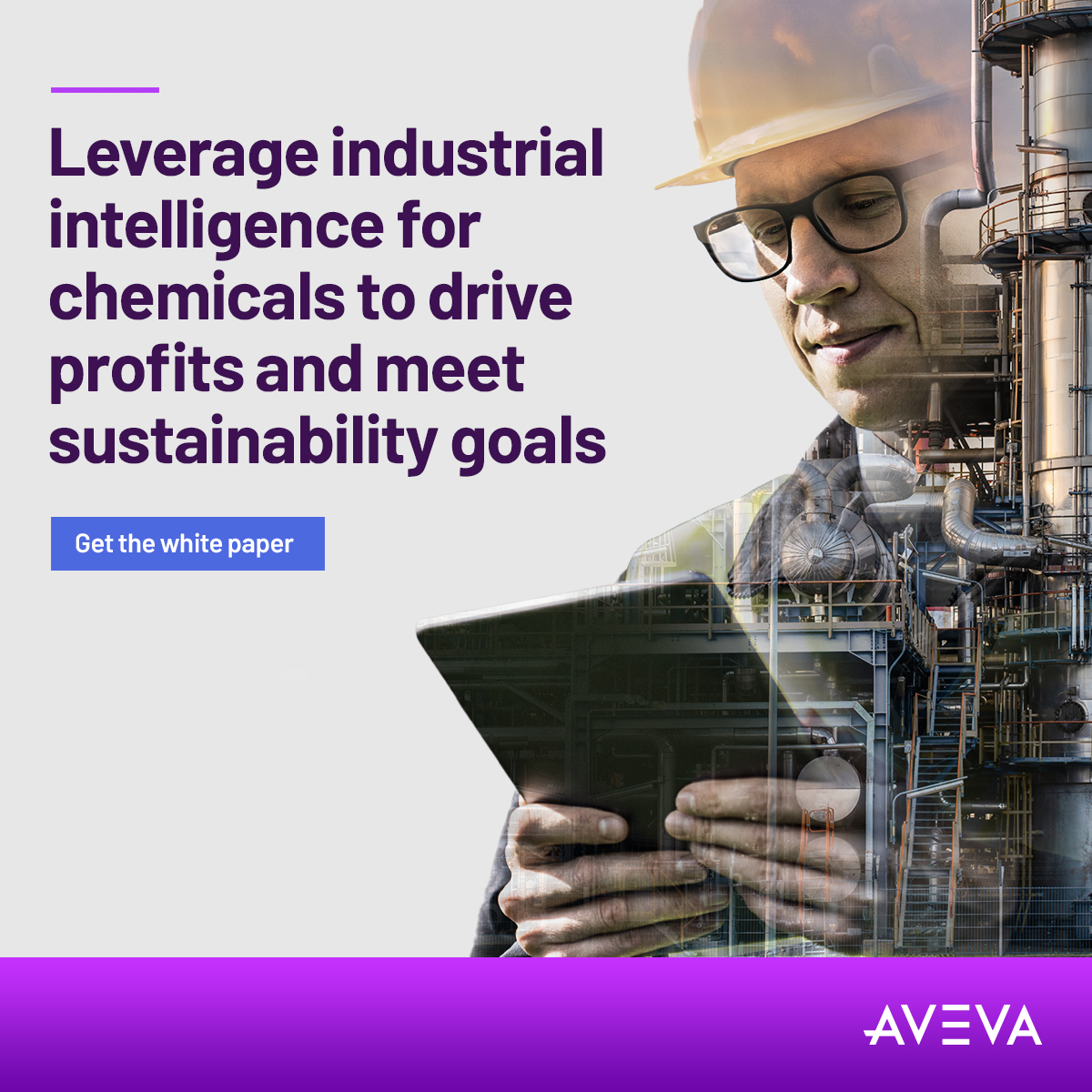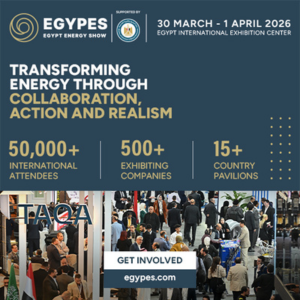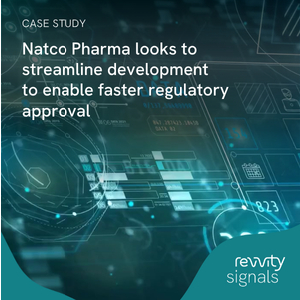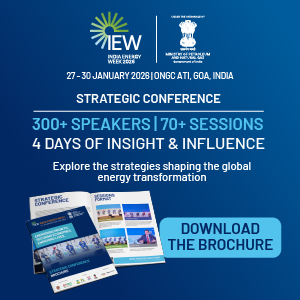Gallery
July 15, 2021
Consumer preference towards safer food brings new technology in the industry : Raju Kapoor, Director of Industry & Public Affairs, FMC India
We are enriching farmer's buying capacity. We see that the production of horticultural crop is going up. This is helping in adaptation to the newer technology. Consumers demand for safer food is forcing industry to bring new technology for safer foods.
July 12, 2021
We are making fresh investment of Rs. 500 crore in downstream projects: Kaushal Soparkar, MD, Meghmani Finechem
The world is looking at India as a rising chemical sector country and this is going to benefit all chemical players. Meghmani Finechem invested Rs 800 crores in the last 3 years.
July 12, 2021
Lot of demand for hydrogen peroxide, chlorine derivatives and intermediates: Arun Tyagi, Head - Marketing, Nuberg Ltd
We are taking up a lot of initiatives on hydrogen. We are recognised as one of the most active players in the Middle East. Nuberg sees a lot of enquiries coming up from chemical and hydrogen peroxides and chlorine derivatives.
June 23, 2021
HIL India targets Rs 1000 crore revenue in 2021-22: S P Mohanty, CMD, HIL(India) Limited
Indian agrochemical sector is growing at a rapid pace. Many investments are coming in the Indian agrochemical industry. We have already proposed plans to the government for backward integration of our plants. We also have a JV with UPL Ltd and National Fertilizers Ltd. We have come up with an insecticidal mosquito net.
June 22, 2021
Andhra Pradesh is promoting PCPIR complex of state as the next Jamnagar of India : Mekapati Goutham Reddy
The state is looking to build self-sufficiency in petrochemical products and drive economies of scale for downstream chemical industries
June 16, 2021
New approaches to innovation will enable the manufacturing sector to reduce waste : A Mohammed, Director, Customer Solution Experience, India, Dassault Systemes
Azmathullah Mohammed, Director, Customer Solution Experience, India, Dassault Systemes talks exclusively to Pravin Prashant, Editor, Indian Chemical News on solutions offerings, clients in Chemical, Oil & Gas, Agrochemicals, and Pharmaceuticals, strategy for driving growth, accelerating sustainability and digital transformation, ‘ONE Lab’ industry solution, Drug Discovery hackathon, innovations planned, and incubating startups. Excerpts of the interview:
Clients in chemicals, oil & gas, agrochemicals, and pharmaceuticals who have deployed 3DEXPERIENCE in India and how are they utilizing this platform?
India is a key market for us and we work with different customers across these sectors to help them address various challenges related to business, innovation, and impact.
The key challenges faced by the chemical and oil & gas sector includes - environmental concerns and increasing public scrutiny, which is fuelling a shift in preference for alternative solutions that disrupt traditional business models. Various complexities arise from aging infrastructure and new, technically demanding assets. Our solutions can help the sector to address these challenges through digitalization and collaboration with an integrated approach that connects people, information, and processes across organizations, ecosystems, and value streams.
In agrochemicals, challenges range from finding new active ingredients to optimizing formulations to regulatory issues in connection with environmental fate or toxicology. Our simulation products aid development stages from finding a new active to generating additional thermodynamic data.
Pharmaceutical companies are under significant pressure to lower costs and to deliver therapies to smaller populations. Leading companies are investing in more flexible infrastructure, leveraging disposable and modular equipment in order to be more adaptive, mainly driven by the acceleration of biologics. Dassault Systemes has a deep understanding of the challenges faced by these companies and is committed to help them advance the pace of discovery of new drugs and medicines.
While attempting to resolve these challenges, many organisations have created cacophony of siloed digital softwares. This often leads to duplication of data, delay in timely notification of hazards leading to huge productivity as well as business loss resulting out of penalties. 3DEXPERIENCE Platform provides an open and an integrated platform approach to our customers to streamline their business processes, while fully understanding and including the legacy deployed solutions that are statutory or specific.
We have been working with several companies in power, oil and gas, chemicals, mining and metals in India. They boarded looking at the depth of our brand applications and industry solution experience offerings, which is seamlessly integrated on our 3DEXPERIENCE Platform.
Our solutions based on 3DEXPERIENCE Platform are adopted by industry innovation leaders such as 3M, DOW Chemicals, BASF, Akzo Nobel, Shell, BP, Chevron, Yeochun NCC, and many more.
What solutions does the 3DEXPERIENCE platform offer to the clients to help push boundaries of innovation, learning, and production? How can India's chemicals, petrochemicals, and pharmaceuticals industries benefit from 3DEXPERIENCE platform?
At Dassault Systemes, we have created solutions specific to the industry segments. These solutions are called Industry Solution Experiences. These solutions are based on the 3DEXPERIENCE platform that combine application, content and services, to enable unique and disruptive innovations in these sectors.
The key Industry Solution Experiences include: Capital Facilities Information Excellence (CFIE) Solution pan across the chemical, petrochemical, agrochemical, and pharma industry. The main deliverable of the CFIE is to provide a unified, platform based approach to integrated siloed information and siloed technologies to provide a Single Source of Truth for real-time monitoring and decision making.
Further, we also have specific solutions, which can augment targeted needs of the industry segments.
Chemical and petrochemical: Materials Excellence connects people, processes and data by removing barriers to data silos and democratizing advanced machine learning and in silico molecular modeling and simulation techniques to guide R&D in the identification and characterization of high performance materials.
Laboratory excellence supports laboratory organizations in Energy & Materials industries with an environment that facilitates and optimizes collaboration, experiment execution, documentation, and data management from R&D through manufacturing to commercialization. It helps to streamline laboratory operations, reformulate and improve product performance, and speed time to market.
Pharmaceutical: The License to Cure for BioPharma Industry Solution experience provides the ability to accelerate therapeutic development, approval, manufacturing, and supply, in a global landscape by leveraging an extensive, connected and comprehensive regulatory and quality platform.
Made to Cure for BioPharma provides deep digital capabilities and visibility across the enterprise and facilitates data-driven decision making for therapeutics supply.
Unique strategy developed by the company to drive growth of Dassault's customer base in India especially in the chemicals, petrochemicals, and pharmaceutical industry?
At Dassault Systemes, our growth strategy has these key pillars - Build on Value with the 3DEXPERIENCE platform, industry focus and cloud/mobile apps; Domain leadership through brand value creation; and improve efficiency by leveraging our sales channel coverage.
We have over 3,000 people working in sales & marketing, R&D, and global services. Furthermore, to select large and mid size customers in the energy and materials (E&M) industry we rope in global tech sales and support teams that are well abreast with the nature of the challenges in the sector. The E&M sector is such that the challenges are fairly similar globally and it is only the local policies, workforce capabilities and technical knowhow and digitalization in organisations that differentiates a global player to a player doing business in India.
Additionally, the specific challenge in these segments is adoption of digital technologies. While we have good domain knowledge specialists, it is difficult to find trained manpower on digital tools. One of the key initiatives at Dassault Systemes to drive growth is Workforce of the Future enabled through the Centre of Excellences for specific industry segments. We have many premier institutes on-board with us such as IITs, CIPET, and APSSDC to facilitate eligible and trained workforce.
How is the company accelerating sustainability and digital transformation in the chemicals, petrochemicals and pharmaceuticals sectors?
The Indian chemicals industry stood at US $178 billion in 2019 and is expected to reach US $304 billion by 2025 registering a CAGR of 9.3%. The demand for chemicals is expected to expand by 9% per annum by 2025. The chemical industry is expected to contribute US $300 billion to India’s GDP by 2025. Similarly according to the Indian Economic Survey 2021, the domestic market is expected to grow 3x in the next decade. India’s domestic pharmaceutical market is estimated at US $41 billion in 2021 and likely to reach US $65 billion by 2024 and further expand to reach around US $120-130 billion by 2030.
With the ambitious growth projections, sustainability is a key concern. UN Sustainable Development Goals 3, 6, 12, and 13 are the ones directly impacted through the processes of chemicals, petrochemicals, and pharmaceuticals industries.
At Dassault Systemes, we think of progress and innovation in terms of balance and impact. As we create value, what are we taking from our planet? As a part of our sustainability mission, we have initiated 12 actions to achieve our ambition to re-invent the sustainable economy. Further Dassault Systemes is today part of European Green Digital Coalition and Global Enabling Sustainable Initiative.
At Dassault Systemes, we strongly believe that virtual twins will be a key enabler for our customers – and the world – to imagine, design, and test the radically new products, materials, and manufacturing processes needed in tomorrow’s more sustainable economy. As part of our purpose to harmonize product, nature and life, we have a strategic ambition to become the world’s leading partner for reinventing a sustainable economy. Sustainable innovation can only be achieved by leveraging virtual worlds to imagine radically new materials, products and processes that reduce industry’s carbon footprint, and advance the circular economy.
Virtual worlds will enable industry to play its part in achieving the SDGs and in cutting GreenHouse Gas (GHG) emissions in half by 2030. New approaches to innovation, processes, and production will enable the manufacturing sector to focus on reducing waste, the life sciences sector to focus on new methods behind more targeted treatments, and the infrastructure and cities sector to focus on more sustainable ways to operate.
Virtual worlds with Dassault Systemes’ 3DEXPERIENCE platform and applications have already helped innovators pioneer new medical treatments, improve service deliveries in cities, and design a sculpture that absorbs pollution, confirming their role as a catalyst and enabler in a real world that is hyper vigilant about the availability of its resources and the well-being of future generations.
How has ‘ONE Lab’ industry solution of Dassault Systemes helped pharmaceutical companies to improve overall laboratory operational excellence and also support its digitalization journey?
Dassault Systemes ONE Lab Industry Solution Experience provides a standard foundation for the understanding and use of laboratory equipment, materials, and procedure steps, as well as a unified role-based user experience for the lab.
It helps pharmaceutical companies to design, develop, characterize, and release therapeutics more effectively at reduced costs with data-driven processes. It improves collaboration, innovation, and decision-making through an easier exchange of more consistent data and information. Further, it increased “Right First Time” through standardization and improved compliance with procedures and policies supporting the Quality and Regulatory initiative.
It provides a better understanding of the processes and data, providing knowledge to be used empirically or to build and refine models that can be used for future laboratory experimentation and testing. By integrating laboratory capabilities and applications through a laboratory-aware foundation, the solutions further help the companies improve operational excellence, support collaboration, and help enable faster time-to-market.
Dassault Systemes has partnered with Drug Discovery Hackathon (DDH2020), a joint initiative of AICTE, CSIR, CDAC, PSA, NIC and MyGov. How will this initiative help India?
In August last year, we partnered in the Drug Discovery Hackathon 2020 (DDH2020). Under this partnership, we offered the academic researchers, faculty, and participants of the hackathon access to our BIOVIA Discovery Studio, powered by 3DEXPERIENCE platform to assist in the search for rapid, safe, and effective therapeutic drugs against COVID-19.
Our solution provided the researchers with a complete toolset for use i.e. from target identification through lead optimization including tools for biologics design and analysis, classical simulations, structure- and fragment-based design, virtual ligand screening, as well as ADME (Absorption, Distribution, Metabolism, and Excretion) and toxicity prediction. This will help deal with designing/optimizing new tools and algorithms which will have an immense impact on expediting the process of in silico drug discovery.
This partnership aligned with our commitment to empowering the Life Sciences industry and the broader healthcare ecosystem, from those working in research and clinical development to manufacturing and patient care, at the forefront of the race to contain and fight COVID-19 in the country.
The 3DEXPERIENCE Lab in India is based out of Dassault Systemes’ R&D premises in Hinjewadi, Pune. What are the new innovations planned in 2021?
The 3DEXPERIENCE Lab offers entrepreneurs, makers, and start-ups unique resources to work on disruptive innovations, leverage collective intelligence, and nurture projects by continuing the trend in India and helping Indian start-ups grow and bring their projects to transform society. The start-ups will have access to Dassault Systemes’ cloud-based 3DEXPERIENCE platform and worldwide ecosystem to accelerate their product development process for two years with technical mentoring, marketing, and business development.
Some of the successful innovative startups that have signed with the 3DEXPERIENCE Lab in Pune are Brainsight.Ai, Padcare Lab, Inali and Lucid Implants. We have several other startups in the pipeline and coming from participants from 3DEXPERIENCE Pitch. Furthermore during COVID we have been working with students to foster frugal innovation. We worked with Nihaal to create the ventilation system in the PPE kit which has been in the news. We have also worked with students to design and develop bike ambulances. We continue to work on some stellar as well as frugal innovation from the 3DEXPERIENCE Lab in Pune.
What are your plans to incubate start-ups at the 3DEXPERIENCE Lab in India and technologies which they can collaborate with Dassault Systemes?
We drive various initiatives through the year to identify start-ups who can be incubated at the 3DEXPERIENCE Lab. During October- November 2020, we hosted a virtual hackathon, Drone-a-thon: Propelling Sustainability, aimed at inspiring students, start-ups, budding entrepreneurs and industrial companies to drive UAV and drone innovations powered by the 3DEXPERIENCE platform. The hackathon comprises a 10 days Design-Simulate-Experience challenge, in collaboration with 3DEXPERIENCE Lab. The hackathon provided a platform to inspire young minds to ideate, create futuristic drones and UAVs in India that can be manufactured locally to help farming and agriculture, city planning and surveillance, provide healthcare facilities and medical supplies in remote areas and help defence establishments in the country.
Further, we host 3DEXPERIENCE Lab pitches every year where startups can propose their idea to the jury and be offered mentorship, the cloud licence of 3DEXPERIENCE platform and brand applications to develop their product into a prototype in the next 2-3 years. We also work with Atal Incubation Center-SNU as Technology/Knowledge Partners to provide winners of their ‘Venture Challenge’ contest an extended support from the conceptual stage to actualization of their business concepts. We will help the chosen start-ups to scale their ideas, provide technical support, market guidance and access to their networks of key contacts for growth. Additionally, the best start-ups with breakthrough/disruptive innovation, collective intelligence, or those that aim to positively impact the society will get the chance to participate in the global pitch of 3DEXPERIENCE Lab.
June 14, 2021
We have been creating new solutions to adapt to the changing conditions: C Mahajan, General Manager - Organisational Process Safety, Dekra India
What are the key milestones achieved by Dekra (India) in 2020 what's the plan for Dekra (India) in 2021?
The biggest achievement of Dekra in 2020 is to have kept all its employees’ safe through the Corona pandemic. Our plan for 2021 emphasizes on the safety of our colleagues and clients through these difficult times. Dekra identified the need of supporting the clients online in various studies, thus keeping its own employees safe while delivering the values.
How big is the TIC (Testing, Inspection, and Certification) market globally? What are the industry trends?
The global TIC market is expected to grow at a CAGR of 3.6% from US $204.2 billion in 2020 to US $243.7 billion in 2025. The primary reasons for this rise in demand is the increasing need for safety, surge in the illicit trade of counterfeit and pirated goods, advancements in networking and communication technologies, and inclination toward outsourced TIC services.
What are Dekra India’s solutions to clients in chemical and pharmaceutical industry?
Dekra India provides technical services and solutions in the field of safety namely: Risk Management, Health & Safety Management, Process Safety Engineering, Reliability & Maintainability, Organizational Behavioral Safety – Human Factor, Process Safety Testing, Process Safety Instruments, Process Safety Equipment for chemical, pharma and various industries/sector across PAN India.
In specific field of product testing, we provide Connectivity Testing, Medical Device Services, Product Certification – Global Market Access, Automotive Testing, Cybersecurity, EMC & RF Testing, and Product Safety Testing. In the specific field of cybersecurity, we have launched CyberSafePS, a solution to assess vulnerability of plants fully compliant with IEC62443 and OG0086.
In specific field of industrial inspection, we provide Shop Inspection, Site Inspection, Plant Safety Inspections, Expediting, Vendor Assessment Services, Mechanized & Advance NDT Inspections, Asset Integrity Management, Lifting Equipment, Cranes, Machinery, Construction Control & Site Safety, Predictive Maintenance Inspections, Statutory Certification – PED, and TRCU.
Which key clients you signed in 2020 and 2021?
Key clients signed in 2020 are FMC Cheminova India Limited, Aarti Industries, Dr. Reddy's Laboratories, Pidilite Industries Limited, L'Oreal India Pvt. Limited, Asian Paints Limited, Aurobindo Pharma Limited, PepsiCo India Holdings Pvt. Limited, and IOL Chemicals and Pharmaceuticals Limited.
Key clients signed in 2021 are QAPCO, Sohar International Urea Oman, Total, Gulbransen, Aurigene Pharmaceuticals Services Limited, Asian Paints Limited, Shreas Industries, Sajjan India, and Orion Pharma.
How is Dekra India addressing the challenges faced by the oil & gas industry and solutions offered? Key clients signed in India?
With digitalization coming up as a key trend in various sectors (including Oil & Gas), we have been able to continuously support our clients, creating new solutions and revamping existing ones to adapt them to the changing conditions in different regions. Key clients signed in 2020 are Cairn Oil & Gas (Vedanta Limited), Godavari Biorefineries Limited, IG Petrochemicals Limited, and Dubai Natural Gas Co. Limited. Key clients signed in 2021 are Torrent Gas, HAL Offshore, Tata Projects, and Bharat Petroleum Corporation Limited.
The company is developing and launching the safety concept behind the new Hydrogen powered HYRAZE league? The solutions provided by Dekra India?
Yes, our colleagues from the automotive division are heavily involved in the HYRAZE project. In relation with the current hydrogen hype, and in an industrial environment, Dekra India supporting a very diverse range of clients in different projects, including hydrogen production, distribution and consumption.
How has Dekra India performed during FY 2020-21 and what is the forecast in FY 2021-22?
Dekra India’s turnover for FY 2020-21 was 1.6 million EURO and forecast for FY 2021-22 is 2.3 million EURO.
The vision for the company in 2025 is to see DEKRA as the global partner for a safe world. How do you plan to achieve this feat?
I would like to mention the internal reorganization started in 2020 and codenamed TOM2020. It is helping us to understand better the needs of our clients, and to provide them with more transversal support.
June 10, 2021
We plan to invest Rs. 1,000 Cr in the next 3 to 4 years : Priyanka Chigurupati, Executive Director, Granules Pharmaceuticals Inc.
How has Granules India responded to the COVID-19 pandemic challenge?
We tried to be as proactive as we could with handling of COVID-19 situation. While running the facilities without disruptions was a priority, ensuring employee safety while following the government restrictions was a bigger priority. We did a lot of contract tracing, ensured any sign of illness was caught at the right time and right remediation measures were in place for the employees and their families. We had a lot of sanitization measures in place and ensured social distancing was in play. We also had a lot of the staff work from home. Most importantly, we ensured that the right medical amenities were made available to the employees and the families.
What are the major R&D initiatives and investments made on key projects at Granules? Areas of focus and outcomes so far?
Over the last few years, we have been constantly investing in R&D, expanding our product portfolio to address the prospective demand across global markets and meeting global regulatory standards. Our focus areas have been diversifying the portfolio by development of large volume products with unparalleled process efficiencies, moving from simple IR products to complex ER dosage forms, and being integrated to the extent feasible on key molecules.
As on 31 Mar 2021, we have filed 24 DMFs in the US market and 26 DMFs in the European market. In finished dosage form, we filed 51 ANDAs with the USFDA of which 40 ANDAs have been approved and 11 are under review. We also filed two dossiers in European region and 3 ANDAs filings in Canada. We have over 50 dossiers under development. All of this is made possible by constant efforts by our R&D team. We will continue to strengthen our R&D by investing in new capabilities and expanding capacity.
How do you view the govt's PLI scheme to boost domestic pharma API manufacturing India? Is it lucrative enough for industry?
India is dependent upon China and other countries for a lot of Key Starting Materials (KSM) for their bulk drug needs. To have self-sufficiency for our bulk drug industry, the government has come out with a PLI scheme for certain API and KSM to be made out of a greenfield facility set up specifically for this purpose. We feel that the quantitative restriction on certain KSM would be a bit of a dampener to utilize the same. We do have certain technologies which we are working with some of our partners who would be investing for certain of the KSM. We might not participate but will subscribe for the quantities produced by our partners.
What was the revenue and PAT achieved by the company during the FY 2020-21? Your expectations for revenue in FY 2021-22 and growth drivers?
During FY 20-21, the company had a top line of Rs. 3,237 crores with a bottom line of Rs. 549 crores. In FY 21-22, we are estimating a PAT growth of 20% assuming the Covid situation doesn’t dampen our efforts further. The major growth drivers would be the increased volumes and geographies of our legacy business and new product launches in the US while increasing our product penetration in the new geographies.
What are the company's major plans in terms of technology adoption and digitalization across various business verticals?
The company has been on the latest SAP HANA platform for the last 4 years and generally works on the cutting edge technologies. We are implementing digital quality management systems across our facilities to improve quality compliance and process efficiency. To move out of technological obsolescence, we started leasing IT assets, which would get renewed every 3 years. Due to the pandemic, we moved all our banking operations online to avoid usage of cheques. The company also uses various technological solutions to be on the forefront in various manufacturing operations too.
Capex investment made by a company to set up a new manufacturing plant or expansion into new territories?
The company is planning its next round of Capex cycle and would be investing around Rs. 1,000 crores in the next 3 to 4 years. We are looking at a greenfield formulations’ facility in Genome valley for around Rs. 450 crores, around Rs. 300 crores would be spent on API expansions in Vizag, remaining on other Capex activities in the US, and maintenance Capex. We believe that this additional Capex will not only strengthen our position in existing areas of focus; provide fixed depositcapacities to launch new R&D products, manufacture larger volumes of the existing and new APIs and add to our packaging capabilities in the US but will also position us to take on manufacturing requirements for the business development activities that are being evaluated.
Major CSR initiatives undertaken in the recent past? Any initiatives to address humanitarian crisis and medical emergencies during the ongoing pandemic?
The company works in CSR areas in and around its plants to strive for the upliftment of the people in these regions. We along with Swarna Bharat Trust work for the welfare of students who have passed class XII and are given basic training about pharmaceutical operations and are absorbed as trainees in various Granules factories. While doing their training they also earn a degree and become a full-fledged pharma professional after 3 years. Recently, the company has donated Rs. 16 crore Paracetamol tablets to the government of Telangana for their drive against COVID-19.
Future business outlook of Granules India in 2021?
At this point, the only outlook we have is to ensure that we are able to run the facilities without any disruptions so our customers and patients across the world have an uninterrupted access to medication.












